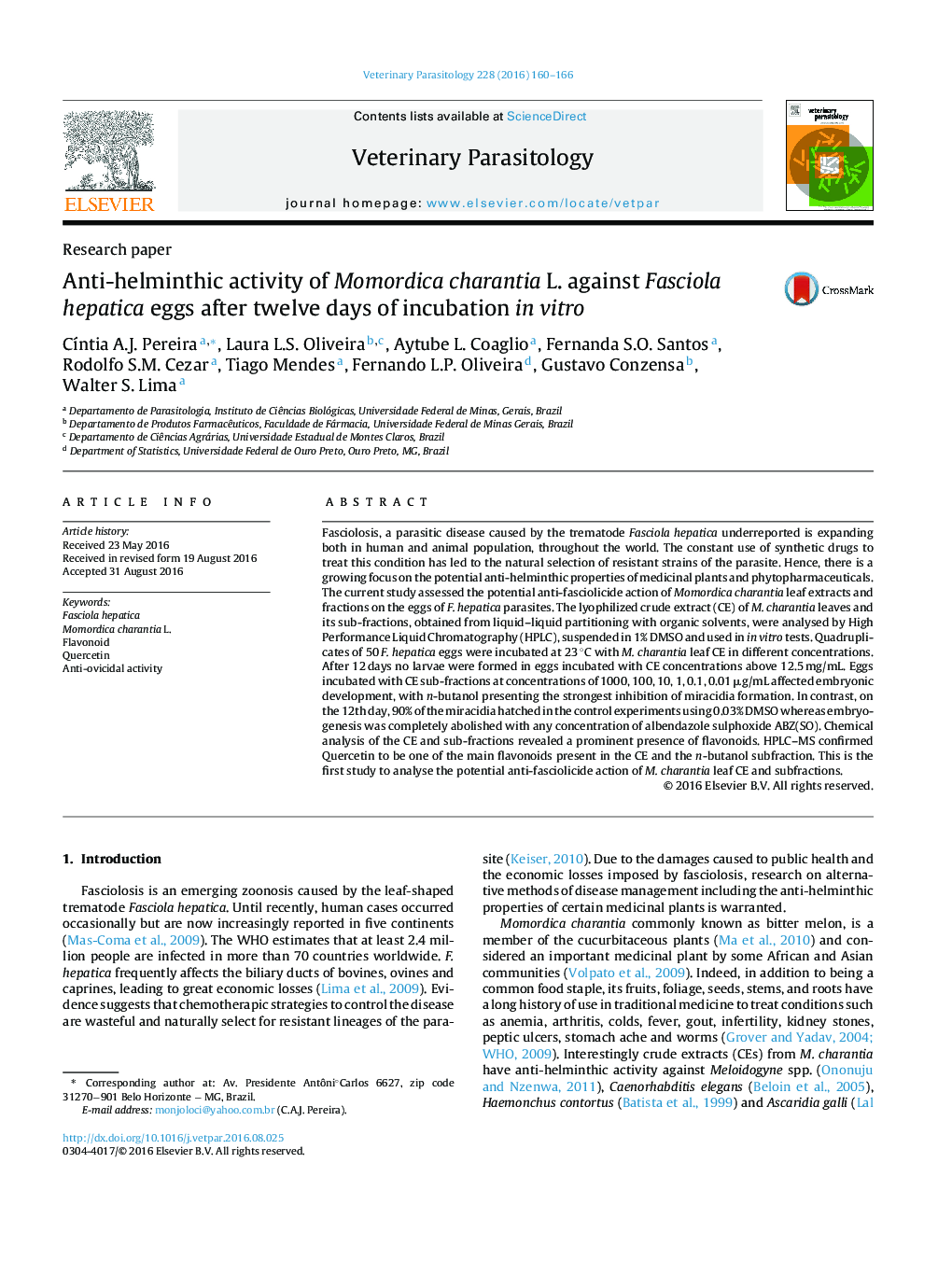| کد مقاله | کد نشریه | سال انتشار | مقاله انگلیسی | نسخه تمام متن |
|---|---|---|---|---|
| 5801967 | 1555648 | 2016 | 7 صفحه PDF | دانلود رایگان |

- Momordica charantia prevent embryogenesis in Fasciola hepatica eggs.
- Anti-ovicidal activity against F. hepatica of the flavonoid quercetin M. charantia.
- Momordica charantia is a potential alternative to control helminth parasites.
Fasciolosis, a parasitic disease caused by the trematode Fasciola hepatica underreported is expanding both in human and animal population, throughout the world. The constant use of synthetic drugs to treat this condition has led to the natural selection of resistant strains of the parasite. Hence, there is a growing focus on the potential anti-helminthic properties of medicinal plants and phytopharmaceuticals. The current study assessed the potential anti-fasciolicide action of Momordica charantia leaf extracts and fractions on the eggs of F. hepatica parasites. The lyophilized crude extract (CE) of M. charantia leaves and its sub-fractions, obtained from liquid-liquid partitioning with organic solvents, were analysed by High Performance Liquid Chromatography (HPLC), suspended in 1% DMSO and used in in vitro tests. Quadruplicates of 50 F. hepatica eggs were incubated at 23 °C with M. charantia leaf CE in different concentrations. After 12 days no larvae were formed in eggs incubated with CE concentrations above 12.5 mg/mL. Eggs incubated with CE sub-fractions at concentrations of 1000, 100, 10, 1, 0.1, 0.01 μg/mL affected embryonic development, with n-butanol presenting the strongest inhibition of miracidia formation. In contrast, on the 12th day, 90% of the miracidia hatched in the control experiments using 0.03% DMSO whereas embryogenesis was completely abolished with any concentration of albendazole sulphoxide ABZ(SO). Chemical analysis of the CE and sub-fractions revealed a prominent presence of flavonoids. HPLC-MS confirmed Quercetin to be one of the main flavonoids present in the CE and the n-butanol subfraction. This is the first study to analyse the potential anti-fasciolicide action of M. charantia leaf CE and subfractions.
209
Journal: Veterinary Parasitology - Volume 228, 15 September 2016, Pages 160-166